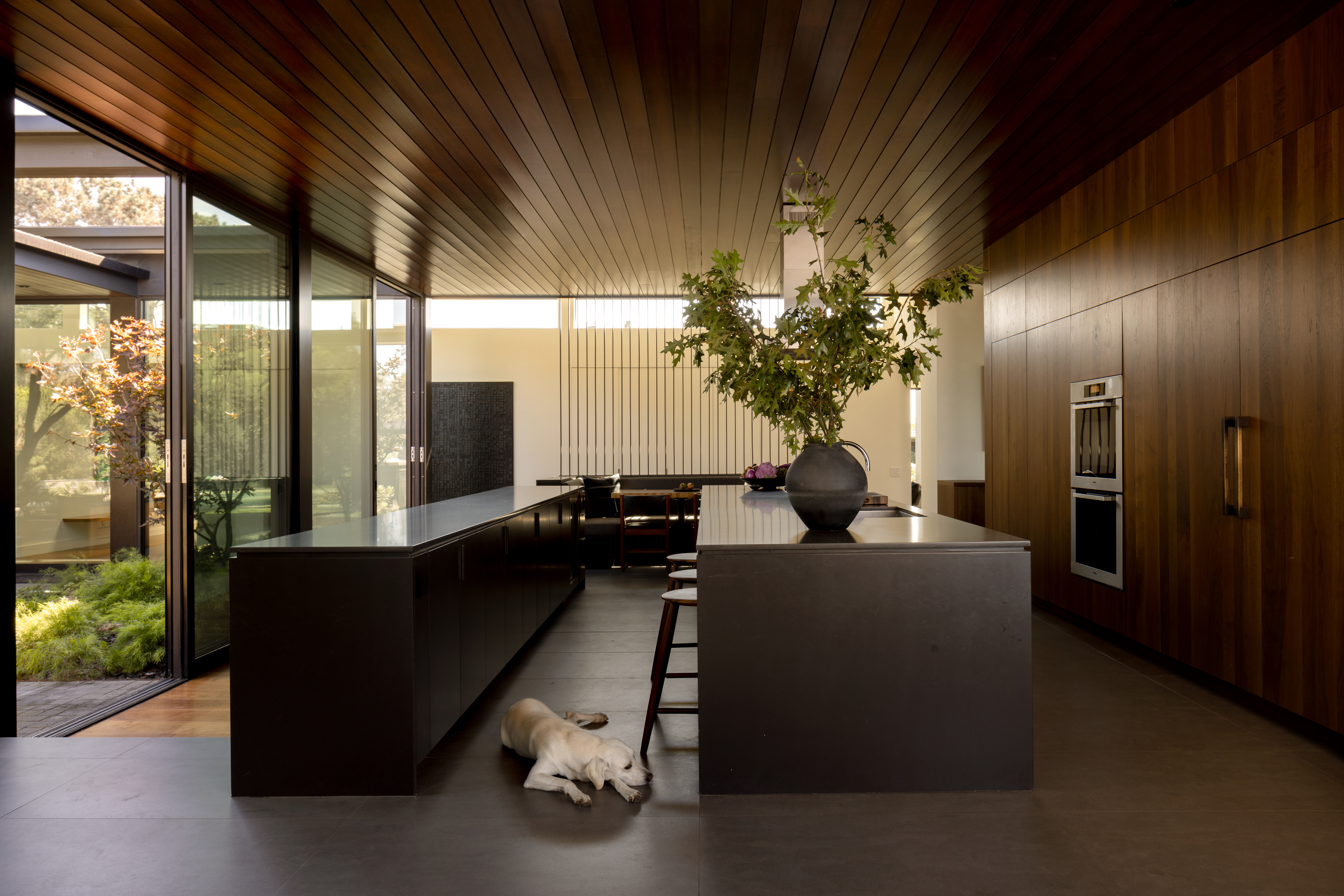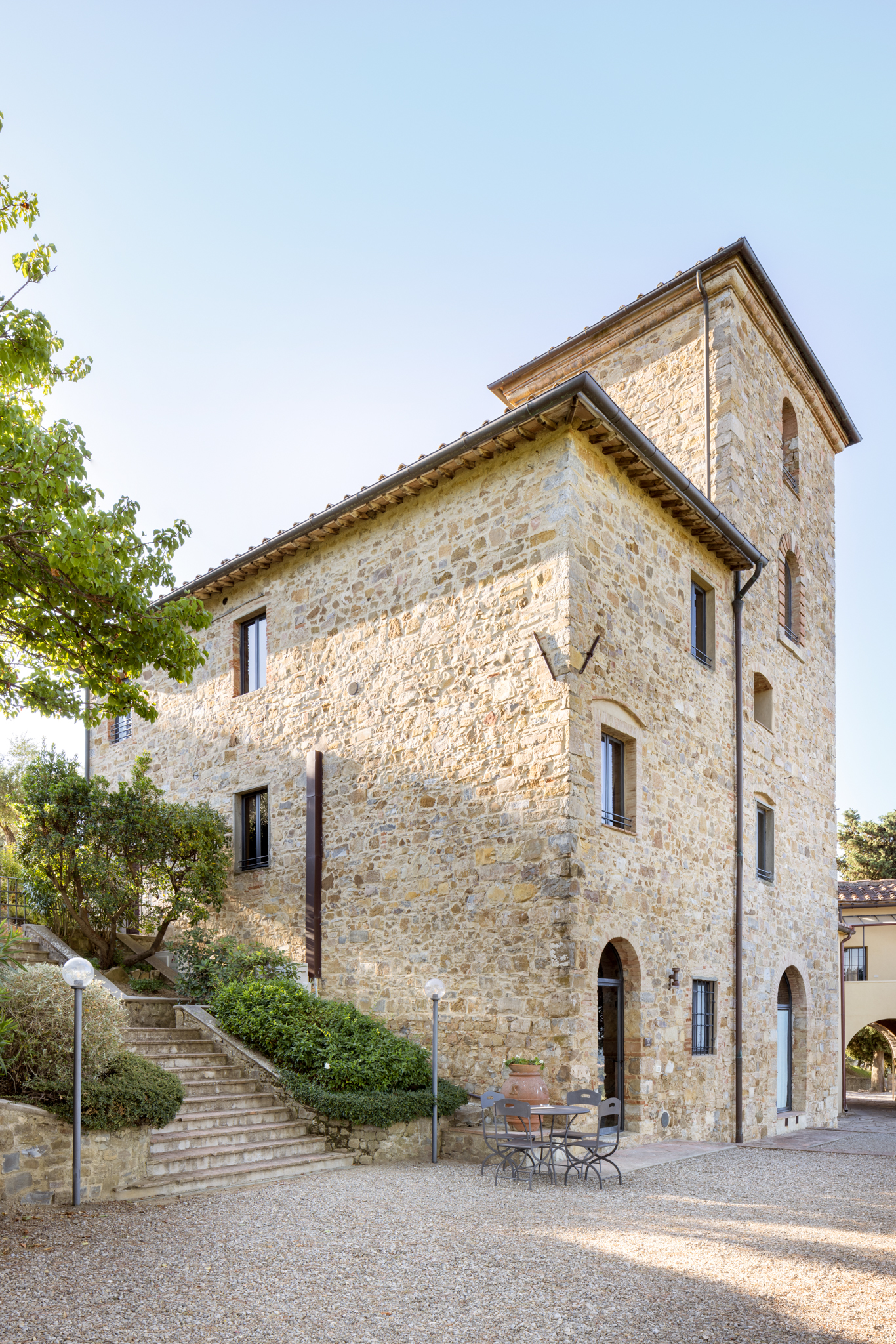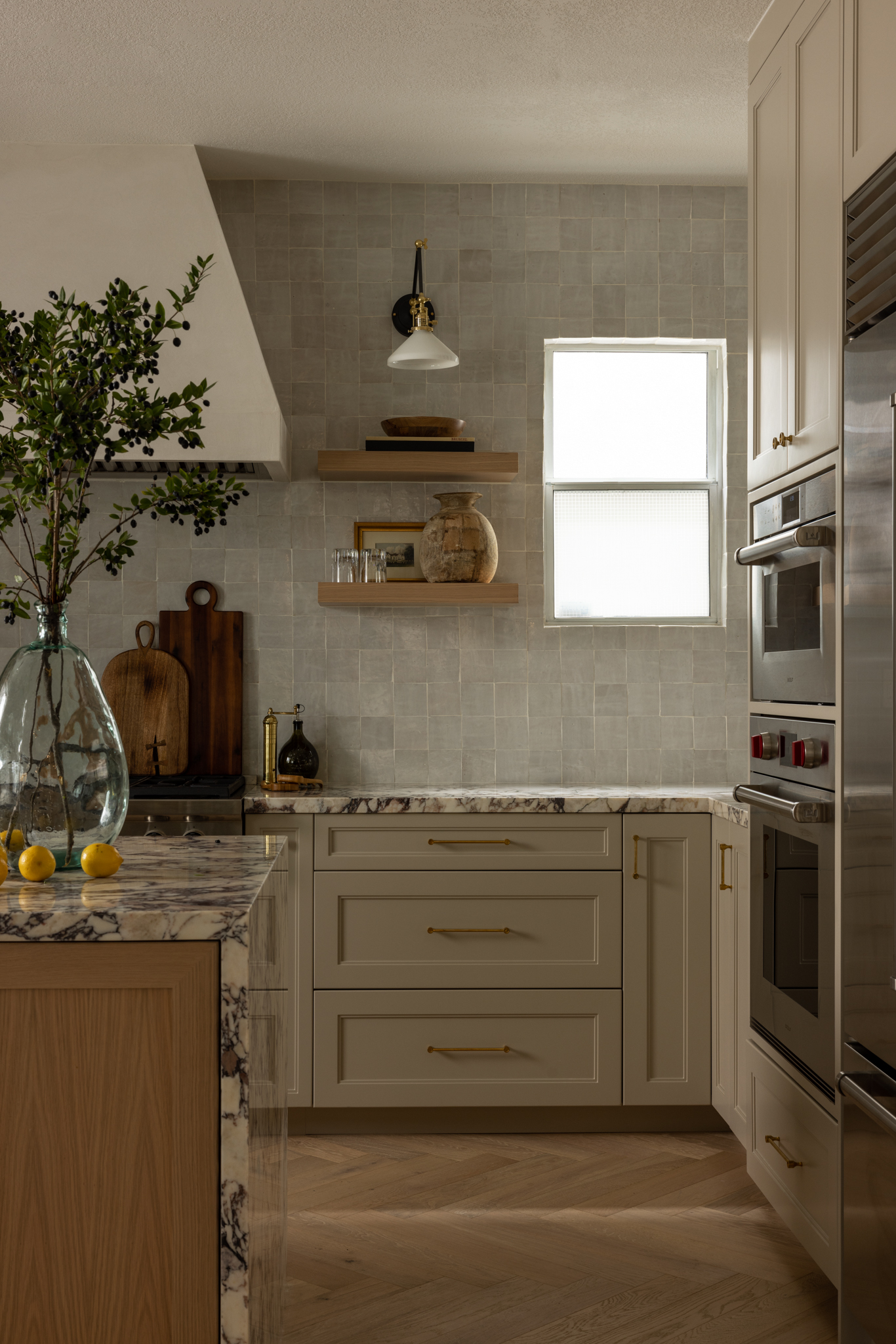Beyond My Lens: Photographer Katie Levine’s Storytelling Podcast, Supported by Narrative
Blog
By Kyle Wilson
Molly Rose is an Interior and Architectural Photographer based in Charleston, South Carolina photographing homes and hospitality concepts throughout the South East & West Coast regions. Her work contributes to legacy-building portfolios for designers and architects. She has been featured in Dwell, House Beautiful, Luxe, Ocean Home, and various online publications. Molly also offers mentoring and online resources to other photographers. We caught up to get her unique insights into the world of interior and architectural photography and the challenge of operating her business on two coasts.
KW: How many properties do you photograph in a year?
MR: I do eight shoots a month if I'm busy, but I typically do four shoots a month. Those are two- or three-day shoots.
KW: Sounds like a really nice steady flow. Do you have seasonality?
MR: Yes, so from January to March, I'm dead. It's all related to tax season. Designers or architects have to pay their taxes starting in March.
KW: So you're like a wedding photographer. Your winter is toast and you're freaking out.
MR: Getting into a house pre-holiday decorations, that's the biggest thing, so September I'm slammed. This December, I had a massive shoot. It was only a 7,000-square-foot house, but it was very detail-rich. I had two second shooters and a stylist there. One photographer was just on architectural details - welts on pillows, lights, door handles, faucets, decorative edges. I was like, I need 250 images from you by the end of today. We need to document this house because I am not only shooting for editorial but also, in many cases, shooting for insurance purposes.

KW: As an interior photographer, how do you earn an income? Who hires you?
MR: Typically I’m hired by an interior designer. What I really like about this industry is that it's a pretty diverse revenue stream. One opportunity for revenue could be just from the photo shoot itself. Then, you might have a third party, like a contractor, working on getting social media content or press placements. The third stream that I'm seeing now is that I'm getting hired by hotel groups and hospitality groups.
The biggest way you can diversify your income is through licensing opportunities. So if I take a photo with a chair, a mirror, a coffee table, a rug, and a lamp, there’s a licensing opportunity for every one of those things in that photo. The fabric of the chair, the manufacturer of the chair, the retailer of the chair. The company that created, manufactured, or retailed the paint color on the walls or the wallpaper. Each individual photo could have up to 20 licensing opportunities. If you're cash-strapped, there's always a way to find a cash injection for your company by just reaching out to a wallpaper company; here are 15 images of your wallpaper, $200 a pop, five years of usage or whatever you want to price it at.
KW: You have this huge running list of things. What’s your organizational process for all of that?
MR: I don't do any outbound licensing sales, [because] it's a little bit sticky with interior designers. I take photos for them, and they license those photos from me. I don't love the idea of cannibalizing my client relationships to increase licensing revenue. We all have to make sacrifices and hone ourselves to be the best-wielded sword for our clients. If a publisher wants to pay me to use images in editorial, great, I will accept that money. But if my usage and my licensing to an editorial or a publishing group [will] limit my client's opportunity to be in that magazine, that's not a good business model to me. I'm on my client's team. Use my images, promote my client, credit me properly, and credit my client.
That being said, in February, I got the cover of Luxe Magazine Los Angeles, and the wallpaper company wants that image. It's a fish on the line, right? I have about 400 other images with their wallpaper. And because I'm in the interior design industry, I know what wallpapers are not getting used very often and what's getting used a lot. So I might say, you want this one, but I also have these 20 other images with this rare product of yours.
When I submit a project to the media as an interior architectural photographer, I also do project PR for my clients so I'm technically the publicist of that project. When I collect information from interior designers and architects, I ask them what wallpaper, furniture, and tile did you use throughout the project? Because the media is going to be asking those questions. I ask them all these questions before we even do the photo shoot instead of needing this information within two hours otherwise we're going to miss out on this editorial opportunity. That doubles as licensing information.
KW: Do you do anything in the stock photo space in any capacity?
MR: I love the idea of stock photography, passive income, all of those things, but no. Even if I have a property release, I'm not selling any images to stock photography. I once hired a photographer to do my brand photo shoot and I had not even used the images for my branding shoot before I found them on a stock photo site. That left such a bad taste in my mouth that now I'm very weird about where my photos end up, who has access to them, and who has the right to use them.

KW: You mentioned a couple of covers you had been on and some editorial pieces. What's been the proudest moment of your career?
MR: The proudest moment of my career is more like I said I would, and then I did. I moved from California to go to the University of South Carolina in 2012. When I graduated, I knew I wanted to get back there someday, so after COVID, my husband and I decided to move to South Carolina. My first shoot was a house in the neighborhood that I lived in when I was in college. That got picked up for local PR, Columbia Metro Magazine. That was my crown jewel, not because it's the shiniest logo on my press page, but because when I was 17, and I decided to go to college somewhere across the country that I had never heard of before, I took a risk, and I did it. It's emblematic of what being an entrepreneur is, what being a photographer is, and taking risks in your life. And then, at the end of it, it all worked out.
KW: What's your problem right now?
MR: Every problem I have is a symptom of the fact that I closed my business in California. I probably have 20 clients left that I will travel to California for. I'm in California right now, shooting for a client tomorrow and the day after. In 2021, we moved [to South Carolina], and telling my clients was the scariest thing I've ever done. The last house I shot was my magnum opus. I mean, this was who I wanted to work for. And we took this chance to kill everything, move to South Carolina and start all over. You know how hard it is to start a photography business. You're always in sales mode. You're always putting yourself out there. My problem is being humble enough that I'm doing this again. I'm starting from scratch, being strategic to only take on what I want to shoot. It's a painful spot to be in, knowing what it was to have an incredible business with great people I loved working for.
KW: How long have you been where you're at now?
MR: We've been in Charleston for a year and a half. I'm going in the right direction and I feel like things are working out. Then I have this whole PR wing of my business. It's my competitive edge.
KW: You've refined things to the point that they're manageable and consistent now, but where along the way was the screw-up? What was the thing you had to learn to get where you are now?
MR: I worked with a handful of people whose design style was not what I like about interior design. My biggest mistake was taking their work too personally when really I was just the archivist of their work. I should have probably been honest with them: I'm not the best photographer for what you're doing, and I don't believe in your design.
KW: Can you share some more detail? Like I know what a wedding might look like that's not my style.
MR: It's easier to define what I want to do. I want to work with a designer who takes a chaotic group of parts and creates a peaceful whole. So if you were to look at a striped wallpaper, a floral fabric, a very graphic pattern tile or something like that, a layman would look at that and go, this is never going to work. When that designer pulls together a house that is so stunning and so beautiful, no one else could do this. You are an artist, you are an expert, you are a master of design. Those who design the totally unexpected, the crazy marriage of chaotic materials and beautiful, out-of-the-box design. I want to work with those people.
I don't want to work with highly predictable copycat designers. I worked too long with the predictable, templated designer, and I am now trying to build up my portfolio of excellence. It's hard to do when I have so much in my portfolio from playing it safe for so many years. If I have made a mistake, it would be that. It's hard for me to break into the area I'm pushing on.
KW: You have this built-in evidence to supply your belief system now. I've done a big scary thing before. I came out of the other end really stoked, so I'm probably going to be able to do that again.
MR:I hired a business coach right when I quit my full-time job to start my photography business and he said something that stuck with me. Follow your fear. That fear is going to be the door that, once you kick it down, your success is on the other side. I was so scared to move. What are clients gonna say? What are people gonna say about my business? It was the scariest thing, but now, a year and a half in, even if I don't have all the clients I want yet, I can say I followed my fear, and I found my life on the other side of that, and I'm really happy about that. Now, the fear is putting myself on Instagram, which I never wanted to be an Instagram photographer.

KW: I've been fortunate to meet really successful and accomplished people via this job, and almost every person has said the best things they've ever done have come from a place of being uncomfortable or anxious about it.
MR: Totally. For now, I am trying to realize the extreme outcomes of a successful business in a totally new territory, so I have to be a little aggressive. I'm only competing with myself. I'm not even paying attention to anyone else. I'm just doing it for me because I genuinely love what I do.
KW: What else are you working on lately?
MR: In the past year, I've prioritized creative work, which I've never done. I've always been too busy. So I've been shooting food in restaurants. I floated an idea to a friend on staff at a food magazine that I wanted to do this project called Best Seat in the House, where I photograph a restaurant from one vantage point. I photograph the food, the design, the people, but I never get up from my seat. It's so fun. It's made me a more technical photographer because you have to get creative.
Since then, I've been photographing for this magazine. When I was drafting my vision for my interior and architectural career, I never thought I would be a contributor to a food magazine. For what? For fun, just to have something that keeps me fresh. You have a lot more control over your work product and your creative process. That is what personal projects are about. I need to hone my creative process in a low-stakes environment.
KW: One of my favorite quotes is from theoatmeal.com. Creativity is like breathing. And if you are constantly exhaling, you will die; you need to stop and inhale in some way. And so that might be anything. Yours happens to be food, mine happens to be portrait work. Whatever it might be, I need to inhale so that I can exhale when money's on the line.
MR: Oh, I love that so much. That is exactly what it is.
KW: This has been a wealth of information. You're a different type of photographer than I normally get a chance to speak with. You're also educating and being a voice so that people can learn the right and wrong ways to do it.
MR: We're a strong community. We work mostly with interior designers and architects, so you're not going to run into many of us in everyday life as a homeowner. If anybody wants to get into this industry, the two financial benefits of working as an interior and architectural photographer are one, repeat business. One interior designer will hire me 20 times over the next three years. The [second benefit] is that there are seven shooting days available in the week. For a wedding photographer, there are two or three. So our day rate looks smaller, but you do it two or three times a week. It's a great industry, and there's always room for more.
KW: Thank you so much for your time today.
MR: Thank you for having me. I've enjoyed listening to the podcast.
Learn more about Molly’s impressive work by checking out her website (mollyrosephoto.co) and following her on Instagram (@mollyrose.photo).
This interview has been edited and condensed. Check out “The Photographer’s Problem: A Narrative Podcast” streaming now on YouTube or Spotify for the full, unedited interview and more inspiring stories with an immersive look into the intricate world of photography.